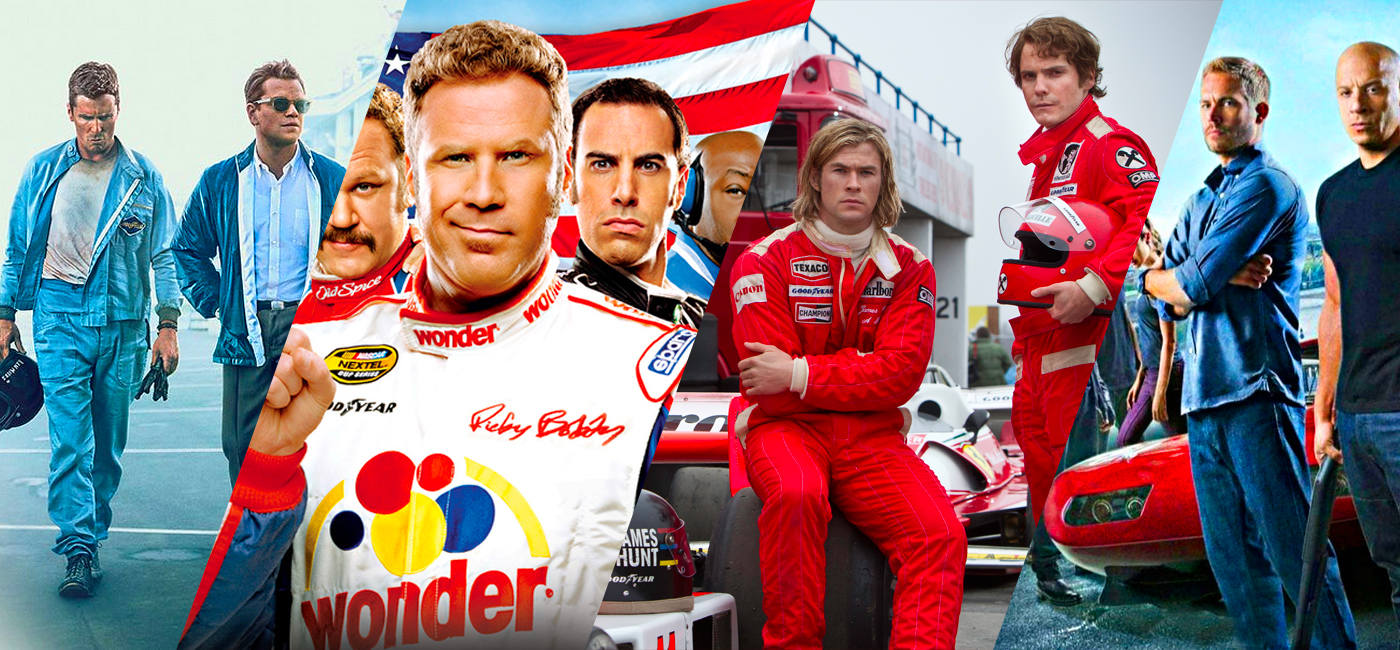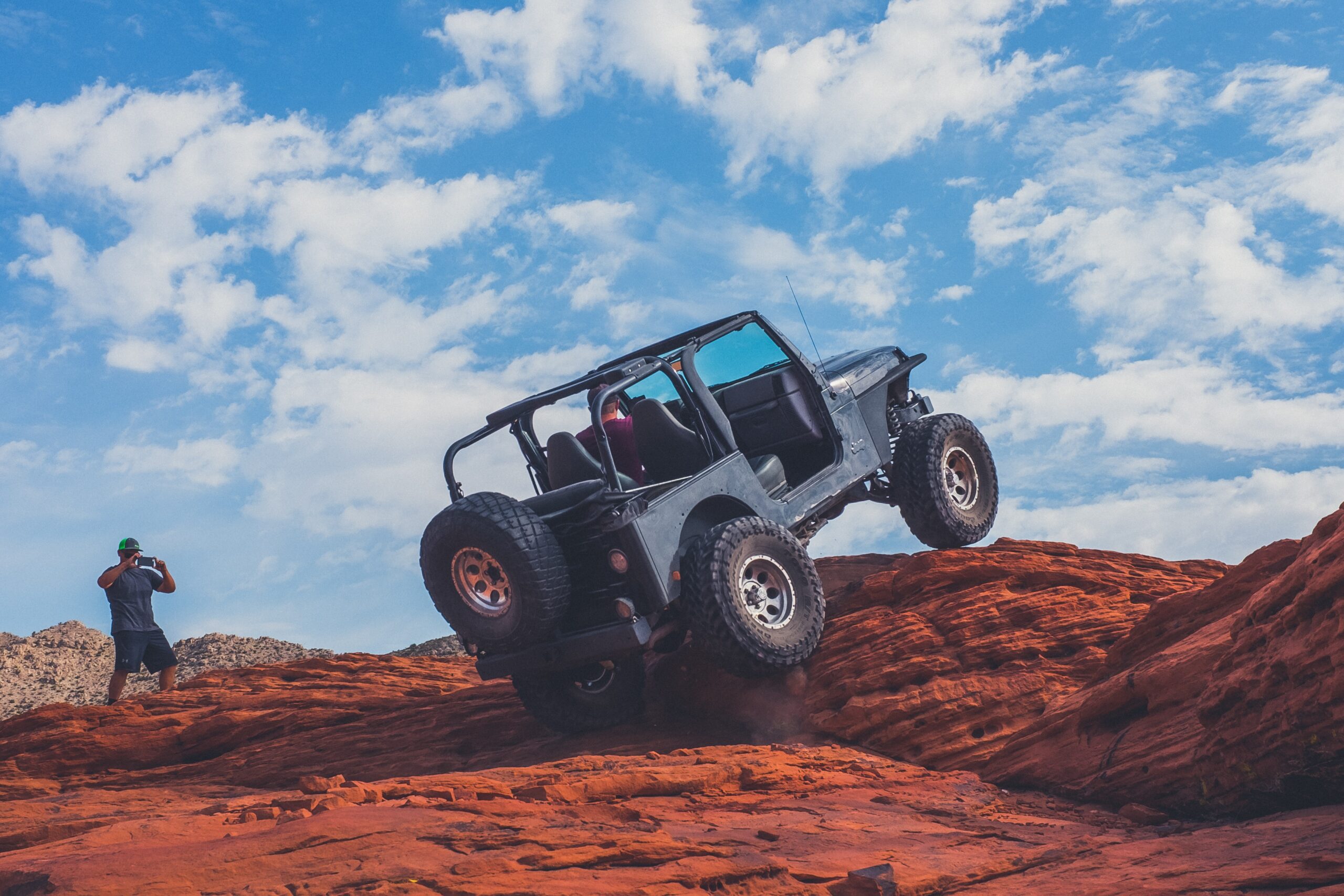For many of us the movies is the closest we’ll ever get to experiencing the thrill of a motorsport race from behind the wheel. Although these high-octane events can be incredible to watch either from the stands in person or via TV livecasts, films depicting these races give us a way to visualize how things look from inside the car, from the perspective of the driver, to say nothing of the other creative angles race films often deliver. As a bonus, films like those of the Fast & Furious franchise also give us a window into a more underground style of racing which would be slightly more complicated to view in person. Aside from the technical feat of recreating legendary races, films also help us contextualize the narrative of important events in motorsport history—this is especially true of the films that depict real people and the actual races they took part in. In recognition of motorsports on film, here is a list of some of the most iconic race scenes ever depicted on the silver screen.
Ford v Ferrari Perfect Lap
The “perfect lap” scene in “Ford vs Ferrari” is a cinematic highlight that not only demonstrates the film’s technical prowess but also captures a pivotal moment in motorsport history. Filmed with a combination of precision driving, cutting-edge camera rigs, and CGI enhancements, the scene meticulously recreates the experience of racing at the Le Mans circuit. Behind the wheel, Christian Bale’s portrayal of Ken Miles takes viewers on a visceral journey, showcasing the blend of skill, courage, and engineering excellence required to push the limits of both man and machine. The historical significance of this scene lies in its depiction of the intense competition between American automotive giant Ford and Italian sports car legend Ferrari in the 1960s. This rivalry culminated at the 1966 Le Mans, where Ford’s groundbreaking GT40 overcame years of Ferrari dominance, marking a turning point in racing history. The “perfect lap” symbolizes not just a moment of personal triumph for Miles but also a monumental achievement for Ford, altering the landscape of international motorsport forever.
Ricky vs. Gerrard
The final race scene in “Talladega Nights: The Ballad of Ricky Bobby” is an extravagant blend of humor, high-speed action, and over-the-top theatrics, distinctively capturing the essence of NASCAR culture through a comedic lens. Filmed with a mix of actual racing footage, carefully choreographed stunt driving, and green screen technology for the more ludicrous moments, this scene perfectly encapsulates the film’s parody of professional motorsport. Unlike the more realistic and gritty portrayal of racing in films like “Ford vs Ferrari,” “Talladega Nights” amplifies the spectacle and drama of NASCAR to comedic extremes. Real NASCAR races, while certainly filled with intensity and competition, are governed by strict rules and regulations that the movie gleefully disregards for the sake of humor. The scene’s climax, with Ricky Bobby and his rival Jean Girard racing to the finish line on foot after a spectacular crash, is a humorous exaggeration that, while far from the professionalism of actual NASCAR, cleverly critiques and celebrates the sport’s inherent drama and the personalities that define it.
Rush (Hunt vs Lauda)
The scene from “Rush” (2013) where James Hunt and Niki Lauda race for the first time is a masterfully crafted piece of cinema that captures the essence of their rivalry, which would define a golden era of Formula 1 racing. Directed by Ron Howard, the scene was filmed with a combination of practical effects, real vintage Formula 1 cars, and sophisticated CGI to recreate the 1970s racing atmosphere authentically. The filmmakers utilized on-location shoots at real race tracks, employing innovative camera techniques and mounting cameras on the cars to immerse the audience in the high-speed action. This scene, and the film as a whole, takes some creative liberties to heighten the drama and tension of the rivalry, yet it remains rooted in the true story of Hunt and Lauda’s fierce competition. The real-life events depicted, including their contrasting personalities and racing styles, are accurately portrayed, highlighting Lauda’s methodical precision against Hunt’s charismatic risk-taking. “Rush” captures not just the physical race but the psychological battle between the two drivers, offering a cinematic interpretation that, while dramatized, respects the spirit and legacy of their historic rivalry.
Fast & Furious (Dominic vs Brian)
The iconic drag race to the train tracks toward the end of the first “Fast and Furious” movie epitomizes the film’s high-octane, adrenaline-pumping essence, blending intense action with emotional depth. This scene was filmed with a combination of practical effects, real cars, and precision driving, complemented by CGI for the nail-biting moments of near-misses with the train. Director Rob Cohen aimed to capture the raw energy and danger of street racing, using multiple camera angles, including in-car, bumper-mounted cameras, and aerial shots, to immerse the audience in the race. The meticulously choreographed sequence, with its palpable tension and high stakes, contrasts with actual street racing, which, while indeed risky and illegal, rarely matches the cinematic spectacle and perfectly timed obstacles presented in the film. Real-life street races are unpredictable, lack the controlled environment of a movie set, and the consequences can be far more severe than depicted on screen. The scene captures the essence of the underground racing culture’s allure but amplifies its intensity and drama for entertainment, embodying the movie’s blend of fantasy and reality.
Tokyo Drift Race
The mountain race scene in “The Fast and the Furious: Tokyo Drift” is a thrilling showcase of drifting, a driving technique that has its roots in Japan. This scene was filmed on location on a winding mountain road, utilizing a combination of real drifting skills, precision driving, and practical effects to capture the high-speed action and the artistry of drifting. The filmmakers employed skilled drivers and modified vehicles to perform the elaborate drifts, ensuring authenticity in the depiction of this motorsport discipline. The use of camera rigs and dynamic angles added to the scene’s exhilarating feel, immersing viewers in the race. The Mustang depicted in the scene, a 1967 Ford Mustang Fastback, was heavily modified for the film, equipped with a Nissan RB26 engine from a Skyline GT-R to make it more suitable for drifting. In real life, a classic Mustang, while not traditionally associated with drifting due to its front-heavy design and lack of drift-oriented engineering, could perform in a drift race if similarly modified. The extensive modifications would help offset its natural disadvantages for drifting, such as weight distribution and suspension setup, making it a competitive choice in a scenario that prioritizes driver skill and vehicle customization, as vividly illustrated in the film.
Days of Thunder
The final race scene in “Days of Thunder” captures the essence of NASCAR racing through a blend of high-stakes drama and authentic track action, making it one of the most memorable moments in motorsports cinema. Directed by Tony Scott, the scene was filmed using a combination of real NASCAR stock cars, professional drivers, and precisely choreographed stunt sequences to achieve a realistic portrayal of the intensity and danger inherent in the sport. The filmmakers utilized actual NASCAR tracks, such as Daytona International Speedway, and employed innovative camera techniques to place the audience right in the heart of the racing action. While the film accurately depicts aspects of NASCAR, including the cars, the sounds, and the atmosphere of race day, it dramatizes the rivalries and personal conflicts to heighten the emotional impact, which is a common storytelling technique in sports cinema. In real-world NASCAR racing, the strategic nuances, the teamwork between driver and pit crew, and the adherence to strict safety regulations are crucial elements that are somewhat simplified in the movie for narrative efficiency. Nonetheless, “Days of Thunder” offers a compelling, albeit stylized, glimpse into the world of NASCAR racing, capturing the spirit of competition and the drive for victory that defines the sport.
Gran Turismo
Jann Mardenborough’s journey from virtual racing enthusiast to professional driver, culminating in his remarkable performance at the 2013 24 Hours of Le Mans, is a testament to the blurring lines between simulation and reality in motorsports. Mardenborough entered the professional racing scene through the GT Academy, a competition designed by Nissan to turn gamers into real-world racers, leveraging his extensive experience in racing video games to secure his spot. His transition from the virtual tracks of Gran Turismo to the prestigious Circuit de la Sarthe for the 24 Hours of Le Mans was nothing short of phenomenal. At the 2013 race, Mardenborough, driving for the Greaves Motorsport team in an LMP2 class Zytek Z11SN-Nissan, showcased not only his adaptability and skill but also an innate understanding of racing tactics and vehicle dynamics, attributes honed through countless hours of gaming. This experience allowed him to understand racing lines, braking points, and car handling with a sophistication that belied his relative inexperience in real-world racing. His performance at Le Mans, where he and his team secured a commendable finish, highlighted not only his personal talent and determination but also the potential of gaming platforms as legitimate and effective training grounds for aspiring racers, bridging the gap between virtual competition and real-world motorsport achievement.
Iconic Movie Vehicles
Reddit User OpulentOwl took it one step further and created an incredible list of some of cinema’s most iconic vehicles.

Pop Culture
JC Whitney remains obsessed with pop culture. For more articles like this, check out our Pop Culture Drag Race series, or best 90s music video cars.





